Procrastination
Do you ever tell yourself “I’ll do it later”? Do you keep putting off that one job until tomorrow? Or Do you decide to do something trivial thinking it’s more important? Then what you are doing is called: Procrastination

What is Procrastination?
Procrastination is where you put off doing a task, in your day to day life, and making an excuse not to do it. This may lead you to find ways to avoid doing the important tasks in your life by doing something trivial instead or choosing to do the task at a later time.

What causes Procrastination?
According to Dr Piers Steele, there are 4 main reasons for what causes procrastination based on our negative emotions towards the task given. These reasons are: not BELIEVING you can do the task, finding no VALUE in the task, losing FOCUS on the task and thinking you have enough time to DELAY the task.

How do I manage Procrastination?
Procrastination can be managed by first working out which issue from those above, is causing it. By working out which one is the cause, you can start managing it by trying out the different strategies below.
Belief

What is Belief (in doing a task)?
Belief is how you feel in your ability to do a task. You may believe a task is too hard for you, too complicated or even impossible.

How do you manage Belief?
In short, here are 3 different strategies for you to try: Spread the Task Out, Break the Task Down OR Consider if you are feeling Anxiety. These strategies are all explained in further detail under the tabs above.
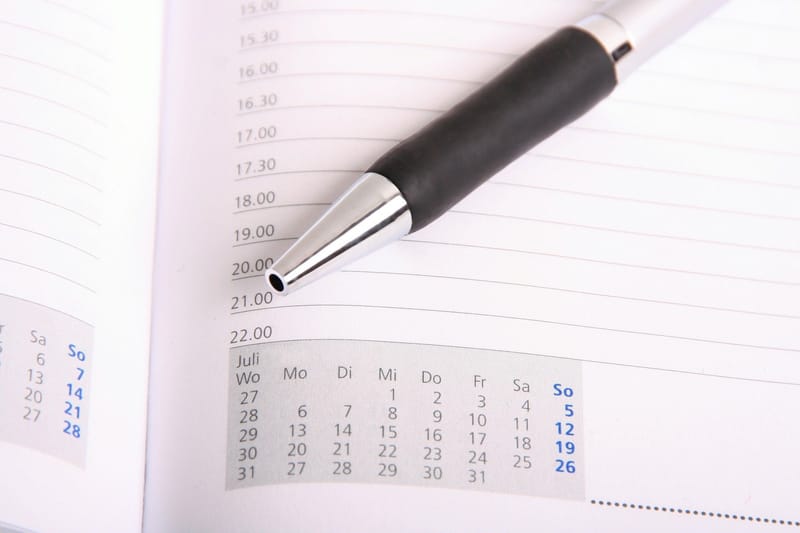
How do you “Spread the Task Out”?
Spreading the Task Out means putting a certain amount of time into working on the task each day until the task is eventually completed. To help you do this, I have broken down the steps below:

Check if you have a Deadline
You can only spread a task out if you have time to do so. If you do have a deadline then you need to spread the task around it in order to meet the deadline. If you don’t have a deadline then you can spread the task out far more easily.

Work out how much needs doing
I have given myself the task of trying to read a book. This is a very long book of 828 pages and 29 chapters. I am not an avid book reader but I intend to read it all and I have no deadline to meet.

Give yourself the RIGHT amount of time to do it
I always give myself 1 hour before bed to read, this is because I have nothing left to do that might distract me. I also only give myself 1 hour for reading as it is not a big priority.
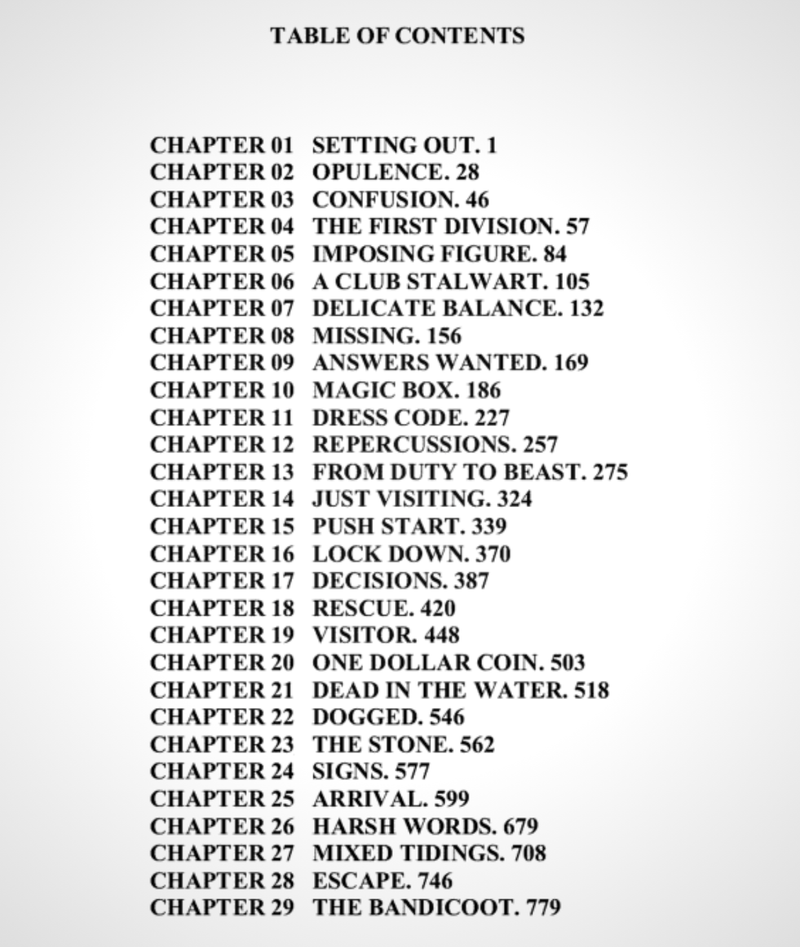
Decide how much you intend to do with the time given
I intend to read 1 chapter a night depending on how long each chapter is.

Work on part of the task and see how long it takes
I started reading chapter 1 which was 27 pages long. It took me just under an hour to read.

Adjust the time if necessary
As I had just about finished chapter 1 before my hour was up, I decided that it wasn’t worth reading the next chapter.

Keep repeating the previous 2 steps until the entire task is complete
The next night, I read chapter 2 which was 18 pages long. I checked the contents page which showed that chapter 3 was only 11 pages long so I decided as it was only a short chapter, it was worth reading now and so I read it even going past the hour I had set for myself.

How do you “Break the Task Down”?
If you find the task at hand too difficult or too complicated, then breaking the task down into smaller steps will make the task seem much more manageable. Rather than tackling the entire task whole, you can now focus each step of the task eventually completing it. To help you do this, I have (ironically) broken down the steps below:

Make a list of steps you need to do to complete the task
Once a month I like to dust down my bedroom, my whole bedroom. I made this list of everywhere that collects dust in my room (in my head): desk, chest of draws, 3 shelves, big bookcase, wardrobe, small bookcase, bedside draws, 2 mini draws and bedside table. A total of 10 areas to dust.

Prioritise them in order of importance, necessity or convenience
I prioritise the dusting by starting off with the wardrobe then continuing with the mini draws, table, desk, chest of draws, bedside draw, small bookcase, shelves and finishing off with the big bookcase. I do it in this order as it allows me to easily get around my room efficiently and effectively.
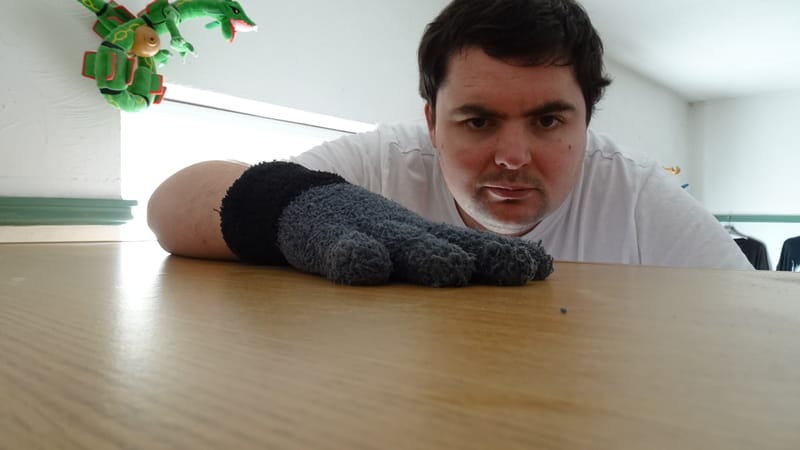
Do the most important or necessary step first
I always start off with the wardrobe as a necessity as I need a ladder to reach the top of the wardrobe where the dust collects. After dusting the top of the wardrobe, I can put the ladder away as I don’t need it to dust the rest of the room and this saves me an unnecessary task of putting the ladder away at the end of the dusting.

Work on each other step one at a time
After dusting the wardrobe, I work my way around the room dusting the next closest thing which is one of the mini drawers. Next to that is the table, next to that is the other mini drawer and so on. With each thing, I remove the stuff off it, dust it, replace the stuff and move on to the next thing until I have eventually dusted the entire room.

Break a big step down into even smaller steps
Some steps are quite big and for me the big step in the dusting task is my desk so I break this down into 2 smaller steps. First, I focus on the left half of the desk by removing the stuff and dusting there. Then, I remove the stuff on the right side of the desk, dust and the desk is done.

Combine this with Spreading the Task Out
Both Breaking it Down and Spreading the Task Out can be used together for a more effective strategy. This can be done by making a list of steps to complete the entire task and then spreading your time out completing each of these steps such as saying you will do some steps today and another few steps tomorrow so on and so forth until the task is complete.

Consider if you are feeling Anxiety
Although our beliefs in being able to do a task usually stem from how hard or complicated the task is, you may also struggle with a task because you feel afraid of failing it and failing other people because of it. If this is how you are feeling, then what you are feeling is called Anxiety.

How can I learn to manage “Anxiety”?
If you want to learn more about how to manage Anxiety, then click the link below to visit the ‘Anxiety Strategies’ page of our website.
Link Here
Believe in Trying
If there is something that everyone should believe in, believe in trying. Don’t allow you beliefs to prevent you from trying as trying something is the biggest step forward you can ever take in your life.
Value

What is Value (in doing a task)?
Value is were you ask yourself, is the task at hand worth doing or not. More specifically, you will find yourself asking: what will I gain from doing a task? why should I spend time doing such a boring task anyway? or even why is it important I do this task in the first place?

How do you find Value?
In short, there are 3 different forms of value you can find in doing a task: Gain, Joy AND Importance. These values are all explained in further detail under the tabs above.

What can you “Gain” from a task?
Gain is about what you get out of a task that you didn’t have before you started it. Down below, I have given you a few examples of what you can “Gain” from doing a task:

Accomplishment
I find working on my website to be hard work. A lot of the time it can get quite tedious but at the end of the day I find no better accomplishment than seeing my work uploaded to the website and knowing the stuff I work on is to improve the lives of autistic people all over the world.

Learning Something New
Every autumn and spring, I like to check my local adult learning service to see if there are any courses that I could learn from. As of writing this, I am enrolling on a Mindfulness course as I want to see what I can learn and share my new found knowledge on the website.

Being Tidy
A messy bedroom leads to a messy mind and so I make sure to keep not just my bedroom but my house always clean and tidy. I do this by setting aside my Fridays to do nothing else but clean the house freeing up space in my mind to think about other things I can do with my time.

New Opportunities
The hard work I’ve put into my website has paid off as I was given the opportunity to work with a group of young autistic kids by running a “superhero” themed theatre and art workshop in an autism group.

Overcoming Yourself
I’ve always had a petty hate of painting walls as I’ve always felt incapable of doing it right but as Aspie Hero Van Gogh once said “If you hear a voice within you say 'you cannot paint', then by all means paint and that voice will be silenced.” and so I did and this thinking has helped me see that I am capable of doing many other unusual jobs around the house such as putting down artificial grass.

How can you find “Joy” in doing a task?
Joy is about making a task more fun to do, like making it more like a game and seem less like a chore. Down below, I have given you a few examples of how you can find “Joy” in doing a task:

See it as A Challenge
I always keep a to do list of every task I need to do and challenge myself to complete as many of these tasks as I can each day.

Listen to Music whilst you work
When I do my monthly shelf dusting, I like to listen to music whilst I do it. I also like to listen to music when I workout on the treadmill. I find that high energy, fast pace music helps motivate me to keep working and work faster at these tasks.

Find a Productive Gaming App
There are times where I can’t be bothered going out for a walk to get exercise. In order to motivate myself, I started playing Pokemon Go, an mmorpg game which requires you to walk around the real world in order to play it.

Reward Yourself for Completing the Task
After I have finished mopping the kitchen and bathroom, I have to let the floors dry which means I can’t use either of them. From here, I choose to reward my hard work by going out somewhere on foot or in my car to have a well earned break and allow the floors to dry so I don’t ruin all my work.

Think Of the End Result
I find cleaning my pond quite tedious as it takes me all day to do it. It starts of looking green and murky ending up looking no different than when I started. On the following day it would all pay off as I would go out into the garden to see all of my fish swimming around in the crystal clear water.

What is the “Importance” of doing a task?
Importance is about understanding why a task needs to be done. Down below, I have given you a few examples of how you can learn the “Importance” of doing a task:

Being a Team Player
When it comes to being part of Yellow House (website link can be found in the top right corner of the website), I have always been willing to take part in the things they do such as performances, community work and art projects. I do this because I know I am part of a team and they need my help by participating and even if I am not participating, I am going there to support them.

Moving Forwards
When I was 16, my mother died and this was around the time I was to do my GCSE exams. The headteacher suggested that I see my mother (who was in Denmark) to say goodbye to her and that my exams could be taken at a later date. I chose to focus on doing my exams instead as I felt that if I didn’t get my GCSEs now, I wouldn’t be able to move forward with my life like everyone else in the school would.

Long Term Benefits
Passing my driving test was a nightmare. I failed over and over again, each time feeling more doubtful that I would ever pass but I never gave up and after my 5th attempt, I finally did it. I never gave up as I knew how the skill of driving would benefit me and now is the most valuable skill I have in my everyday life as I can go anywhere I want, whenever I want in my car.

Taking Risks
After many years of living in our own house, my cousin and I decided to fit artificial grass into our front garden and a professional would cost too much. I took a risk by doing research into how to fit the grass, bought the equipment and attempted to fit the grass myself. The end result can be seen in the accompanying picture and this would never have happened had I not took a risk.

Acceptance
My mother’s death was the most heartbreaking moment of my life. The thing is that ever since her death, I have found every every other death after my mother’s to be far less upsetting. Even the most recent death I have dealt with, that being my 93 year old Nan, I was not sad as at this point in my life I have learned to accept death and move on with my life.

Choose Values that Benefit You
Everyone has different things that they value but the only important values in life are the ones you yourself value as not all everyone else’s values will benefit you. You can value anything you want just as long as you use your values to become more productive in benefiting your life and not hurting others.
Focus

What is Focus (on doing a task)?
Focus is the ability to concentrate on getting a task done without being distracted by unnecessary things. There are many more unnecessary things to be distracted by in today’s world, technology is a big one.

How do you manage Focus?
In short, here are 3 different strategies for you to try: Increase your Willpower, Decrease the Resistance AND Have Fun Properly. These strategies are all explained in further detail under the tabs above.

How do you “Increase your Willpower”?
Increasing your Willpower to do a task starts with you realising that your mind is stronger than you think and that you are in control of your life. From here, it is about taking the right steps to take better control of your mind, steps which have been broken down for you below:

Remember: You’re Not Perfect
Before starting Aspie Heroes, I got turned down from applying to many jobs. I thought I wasn’t perfect enough to get a job so I tried to be as perfect as I could be. This only made feel worse about myself as I lashed out at other people around me because I could not be perfect. I live a better life now because I accept my flaws as a human and try to only be the best that I can be.

Live in the Present
In the past I was told at school how bad being on Jobseekers Allowance was and years later ending up on Jobseekers. I also question whether what I am doing with my life including Aspie Heroes is the right thing for me and whether I can still do it in the future. I found that the past made me feel depressed and the future made me feel anxious. From this, it makes more sense to live in the present and see what comes from life.

Recognise that Small Victories lead to Big Triumphs
Small victories help you to grow as a person and eventually will lead you to big triumphs. For example, I was turned down constantly for jobs but sometimes I would get an interview which I saw this as small victory as it is rare to even get an interview. Even now when working on my website/project, anytime I get to do a talk or do an art workshop I see that as a small victory.

Build Regular GOOD Habits
A habit is something you do as part of a routine. Routines are helpful to autistic people but some of the habits we do are not such as watching YouTube a lot. A good habit to get into is getting up and going to bed at the same time each (week)day. I always like to get up at 8 am every weekday and go to bed at 10:30pm. Another habit to get into is exercise which can be as simple as a 30 minute walk; I like to run on a treadmill.

Meditation
Meditation is about the using breathing exercises to focus the mind away from all distraction to reflect on ourselves and our thoughts. Meditation is an easy habit to get into as you only need a minimum of 5 minutes a day to do it. If you are interested in trying meditation then Aspie Heroes has a Meditation page in the Health & Wellbeing section which can be found by clicking on “Explore” at the top this page.
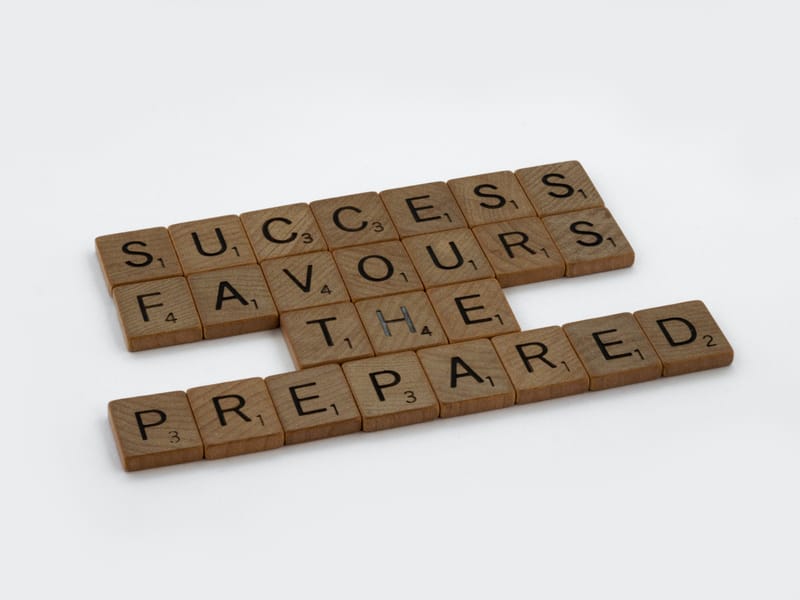
How do you “Decrease the Resistance”?
Decreasing the Resistance to doing a task involves preparing things ahead of time. Down below, you can find a step by step process of how to do this:

Prepare your Workspace
The first thing to do is to prepare your workspace. For me, I like to clean my desk of unnecessary clutter by organising my any loose papers and putting any useless rubbish into the bin. Another way of preparing my workspace is to put on some light ambience/ambient music to listen to while I work so my mind won’t wonder off from the task at hand.
Remove any Distractions
The next thing I like to is to remove anything that might distract me. The main thing that distracts me is my smartphone as I can look at it for hours. Another way that I remove distractions is by using different web browsers for my work and my leisure. I use Safari for my work and Google Chrome for my leisure.

Turn Output tasks into Input Tasks
An Output task is a task you know you have to get done but are not sure how to start doing it. Input tasks are where you take an Output task and break it down into smaller tasks that you can easily manage and actually start to work on.

How does this work?
I am always trying to add new features to my website. The idea of adding a new feature is an Output task, a task where the idea is great but I struggle to work out how to actually create it. From here, I will think of a specific task I can do to start actual work on the idea. The task I choose to do is research.

Use the Pomodoro Technique
This is a technique I have recently adopted into my work and it has helped me get more work done in a shorter space of time. The Pomodoro Technique works by choosing a specific Input task and focusing on that task for 25 minutes (I do 20) and after that time period has past you then take a 5-10 minute break.

During the Pomodoro Technique
During the Pomodoro Technique you should be focusing only the task you have selected. If you start to think about something that has nothing to do with the task then write it down and come back to it later. When it is time for a break, you should use the time work on anything you have written down earlier.

How do you “Have Fun Properly”?
To Have Fun Properly means that when it comes time to do something for fun, you should try to have High Density Fun rather than Low Density Fun.

What is the difference between "High Density Fun" and “Low Density Fun”?
Low Density Fun is fun that requires very effort to do such as watching Youtube videos or checking your Facebook/Instagram accounts. The problem with Low Density Fun is that it is very easy to do but is not very rewarding to your wellbeing as it simply wastes time.

What is “High Density Fun”?
High Density Fun is fun that requires more effort to do but is a lot more rewarding in the long run. The rewarding experience of high density fun is not only having fun but also feeling a sense of accomplishment and acquiring something new such as a new skill, new friends or a new understanding about the world around you.

How can I have “High Density Fun”?
The best way to start having “High Density Fun” is by doing something you like to do but struggle to find the time and effort to put into it. For me, I struggle to find time to play video games and put the effort into watching films (these are normally considered Low Density Fun). It is truly best to have High Density Fun outside of the house but you can have it at home if going out isn’t an option.

High Density Fun Outside the House
Outside the house, you can go out for a walk or go bike riding for exercise. You can also go out to the cinema or to a cafe to get away from home. Why not socialise by meeting up with friends, even go shopping together. You could also consider joining a hobby group or take up a sport to learn a new skill and meet new inspiring people.

High Density Fun At Home
If the weather is awful or you don’t have the time or money to go out, you can do plenty at home. You could try your hand at learning something such as a musical instrument, cooking or anything you have wanted to learn. You could even read a book, draw or do colouring pages. You could meditation which can fit in at anytime of the day and takes as little as 5 minutes to do.

How our website can help!
If you are interested in doing colouring pages, meditation or learning how to cook, then Aspie Heroes has pages for these which can be found under the “Health & Wellbeing” on the Explore page which can be found by clicking on “Explore” at the top this page.

Your focus should be on YOU!
It doesn’t matter what anyone else is doing around you even if it makes then better or worse than you. The only person you should focus on is YOU and what you should be focusing on what YOU can do in the world around you, not what others do.
Delay

What is Delay (in doing a task)?
Delay (in doing a task) is where you deliberately put off, slow down or hinder yourself from doing a task that should be done now, instead choosing to “do it later”. You may hinder yourself because you don’t like doing the task or that you feel the task is so easy that it can be done at the last minute.

How do you manage Delay(s)?
In short, here are 3 different strategies for you to try: Batching, Prioritisation AND Think about Afterwards. These strategies are all explained in further detail under the tabs above.

How do you use “Batching”?
Batching is where you group tasks together based on the situation you are in. Down below, you can find a list of various situations that you find yourself in and how to use batching in them.

Location
This can be a room in your home or a place you have travelled out to. If you know you have multiple things to do that can be done whilst your are at this location, then you should GET THEM DONE. Always be telling yourself “While I am here, I may as well do (whatever needs to be done)”.

Time
Time is precious and should be used wisely. If you have free time or nothing better to do then should take the time to GET STUFF DONE. Always be telling yourself “While I have the time, I may as well do (whatever needs to be done)”.

Cleaning
Cleaning is something most people hate but must be done as no one likes to live in filth. If you start a cleaning job such as vacuuming/mopping a room, you may as well vacuum/mop other rooms seeing as you already have the vacuum/mop already out and ready to go. Always be telling yourself “Since I have started cleaning here, I may as well clean elsewhere”.

Errands
Errands are short journeys taken to drop off or collect something. If you know you have multiple errands to run, then why not do them all on the same journey. This is especially helpful if don’t have a car at your disposal as travelling on foot or by public transport can be time consuming. Always be telling yourself “If I can do it all in one go, then I may as well”.

Cooking
People usually only cook when they need to but sometimes people can feel too tired to cook and end up ordering take-away food, which is very unhealthy. Instead, why not cook a large “batch” of food such pasta, noodles or even soup then either refrigerate or freeze them in plastic containers. This way, you have food prepared for later days for when you are too tired to cook.

How do you “Prioritise”?
Prioritising is where you choose to do the task most important to you first. To help you do this, I have broken it down into steps below:

Make a List
The first thing to do is to write down everything you need to get done no matter how big, small or important it is. This will give you a clear perspective on how much you need to get done.

Check for Deadlines
Check which tasks have a deadline- a date or time they need to completed by. These tasks should be prioritised first on your list.

Order the List based on Importance
The deadline tasks should go on first as these must be done within a certain time. With the rest of the tasks, you should order them based on what works best for you. The best way to do this is through “batching” them together based on location, time or by the tasks themselves. You can find out more about batching by clicking the Batching tab at the top of this section.

Breakdown big tasks into smaller lists
Some tasks are quite big and require more work to complete. For these tasks, you should break them down into a list of steps needed to complete the task. For example, if the task is ‘change my bedding’ then you may break it down like this: strip bedding, put sheet on, put pillow cases on, put quilt cover on. Remember, if you can visualise the task in steps, you will be more committed to completing it.

Commit to Completing your List
Now you have your list, you need to complete it. DO IT NOW, start completing the tasks immediately. If you find an opportunity to complete a task, then DO IT NOW. If you have deadlines to meet DO IT NOW. You will feel so much better that you did.

How do I “Think about Afterwards”?
Thinking about Afterwards is where you realise the stuff you can do once you have completed the task and got it out of the way. This can be something that you can get from the task or something that you really want to do with the rest of your day. Down below, you can find different ideas of what you can do “After” the task is down.

Free Time
Think about all the Free Time you will have after completing the task. You could play video games, go out somewhere or even simply have a break. The sooner the task is done, the more free time you will get.

A Weight off your Mind
Think about how much of A Weight will be Off your Mind (metaphorically) by doing the task. The task was something you were constantly thinking about, always taking up space in your mind (metaphorically) but with the task done, you no longer have to do it or even think about it again. The sooner the task is done, the sooner you can focus on other things to do or even just rest your mind entirely.
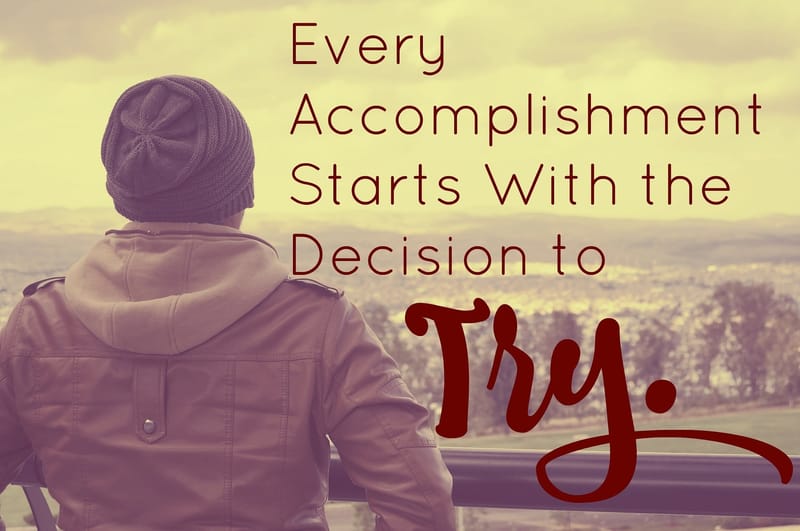
Accomplishment
Think about how much of an Accomplishment it will be to complete the task. Think about how happy you will feel when you complete the task, think about all the barriers you have broken through such as the excuses you made to avoid the task and even the worries or doubts you had about being able to do the task. When the task is done, you should feel proud of what you have overcome from doing it.

Rewards
Think about what rewards you can be treating yourself to when the task is complete. A reward could be playing video games, having a dessert, seeing a movie or even going shopping. As long as you complete the task first, then you should be entitled to reward yourself for the hard work and effort you have put in.

Outcome
When you have actually completed the task, think about how it felt doing the task from start to finish. A lot of Autistic people think a task is much harder to do than it actually is so you may be surprised with how the task was not as hard as you thought. Remember this feeling for future tasks as now you know what the task was like, future tasks will not seem so daunting.

DO IT NOW!
Remember, when something needs to be done then your first reaction should be to DO IT NOW! If you don’t want it to be a problem for you or the someone else who has to remind you to it over and over again then DO IT NOW! Rather than do it later.
Disclaimer
GENERAL
All photos on PROCRASTINATION page are taken from Pixabay OR Unsplash except for the ones stated below:
BELIEF
The "In the Presence of Madness" book pages in the 'Spread the Task Out' section belong to me.
VALUE
The "New Opportunities" picture in the 'Gain' section and the "Think Of the End Result" picture in the 'Joy' section belong to me. All of the pictures in the 'Importance' section except for "What is the Importance..." and "Moving Forwards" also belong to me.